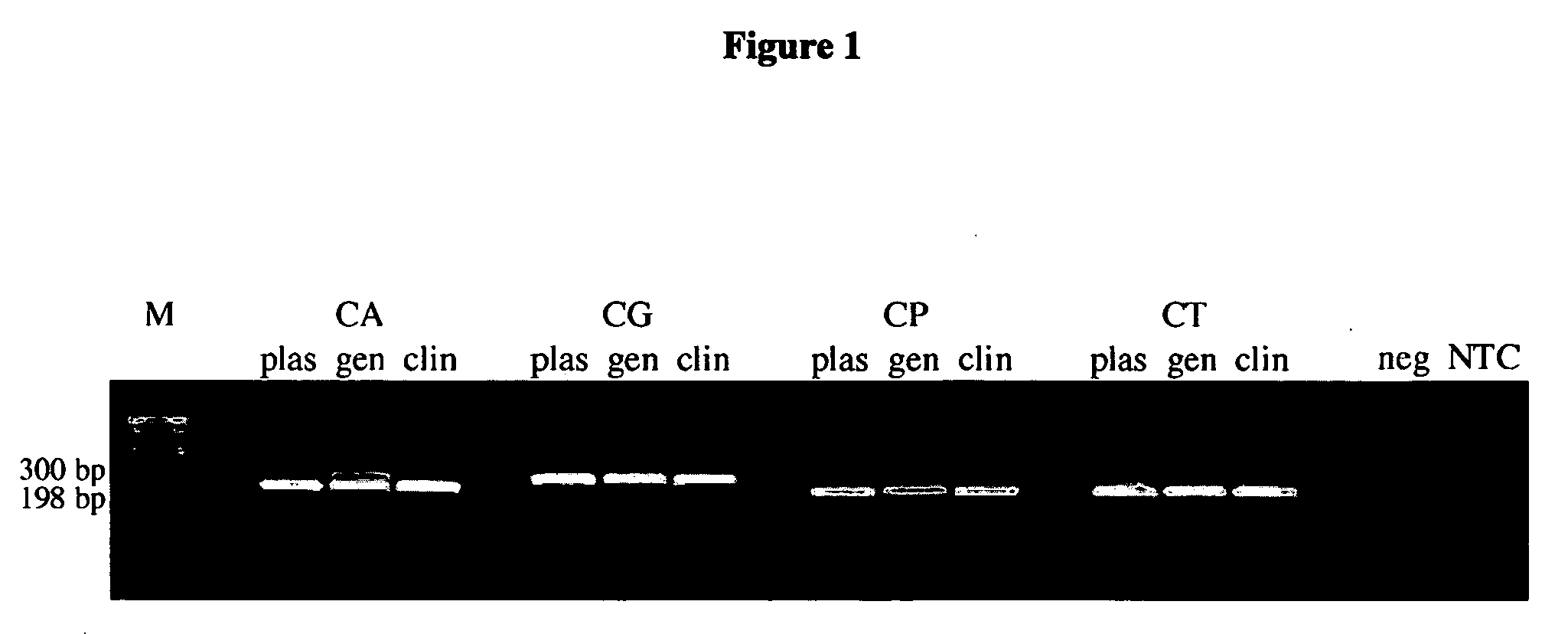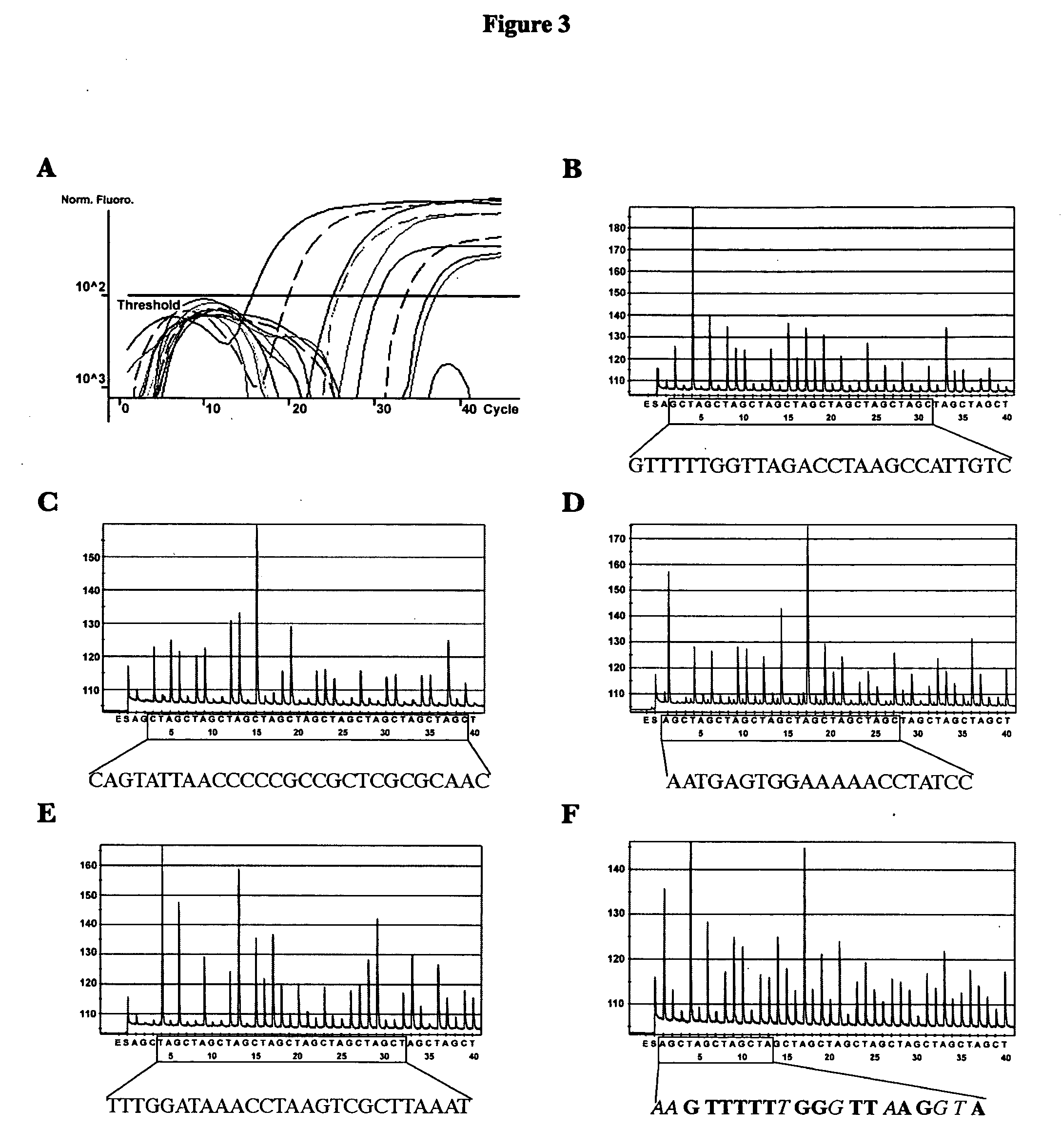Methods and compositions for detecting and identifying species of Candida
a technology of dna extraction and composition, applied in the field of methods and compositions useful for detecting and identifying candida species, can solve the problems of lack of strategies for detecting i>candida /i>species in dna extracted from vaginal samples, especially without time-consuming culture, and the current dna-based i>candida /i>detection methods do not take into accoun
- Summary
- Abstract
- Description
- Claims
- Application Information
AI Technical Summary
Benefits of technology
Problems solved by technology
Method used
Image
Examples
examples
Clinical Samples and DNA Extraction
[0066]A total of 231 vaginal samples from female subjects were tested. The subjects' symptoms, HIV status, and clinician diagnoses were not disclosed. Patient care providers collected specimens from a vaginal sampling using a Cellmatics swab (BD, Sparks, Md.), which was then placed in 2 ml of its accompanying transport medium. Upon receipt, swabs were immediately processed for analysis by PCR. Established procedures for SDS / proteinase K lysis and phenol / chloroform DNA extraction from 470 μl of swab transport media were used (see Ausubel et al., 1997, Short Protocols in Molecular Biology, Third Edition, John Wiley & Sons, Inc., New York, N.Y.). DNA concentration was calculated by absorbance 260 / 280 readings and was adjusted to 0.2 μg / μl prior to PCR analysis.
Conventional PCR Assay
[0067]The primers utilized for species-specific amplification of Candida ribosomal DNA and reaction conditions were previously described (see Luo et al., 2002, Rapid identi...
PUM
| Property | Measurement | Unit |
|---|---|---|
| Fraction | aaaaa | aaaaa |
| Electrical conductance | aaaaa | aaaaa |
Abstract
Description
Claims
Application Information
 Login to View More
Login to View More - R&D
- Intellectual Property
- Life Sciences
- Materials
- Tech Scout
- Unparalleled Data Quality
- Higher Quality Content
- 60% Fewer Hallucinations
Browse by: Latest US Patents, China's latest patents, Technical Efficacy Thesaurus, Application Domain, Technology Topic, Popular Technical Reports.
© 2025 PatSnap. All rights reserved.Legal|Privacy policy|Modern Slavery Act Transparency Statement|Sitemap|About US| Contact US: help@patsnap.com



